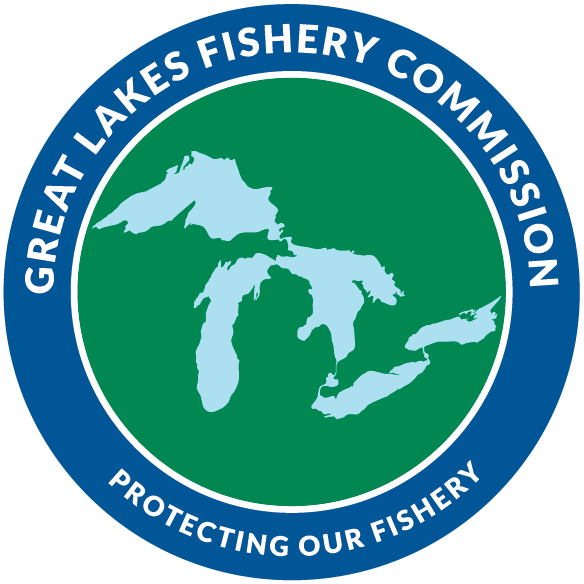Updated 2024-07-05 14:44:54
Lake Huron -> 8.0 Prey -> Prey Fish Diversity
Reporting Interval
2018 - 2022
Area
main basin
Meeting Target?
Does Not Meet
Indicator Trend
Upward trend
Confidence?
High
8.1.1. Shannon diversity index is at or above 75% of the time series maximum
Species diversity is considered a useful indicator of prey (forage) fish community health and stability (DesJardine et al. 1995, Roseman et al. 2009). Mean prey species diversity as measured by the Shannon Index (H) for the current reporting period (H = 1.10) was just below target (H = 1.17) but slightly above the 2011-2017 mean (H = 1.03). Diversity was above target in 2018 and 2022 but below target during 2019, 2020, and 2021 (Figure 1). Species diversity of the Lake Huron prey fish community peaked in the 1990s, declined dramatically in the early 2000s, and has been highly variable with an upward trend ever since (Figure 1). Diversity is a composite index estimated from species richness (number of species in the community) and evenness (the distribution of abundance across species). Species richness has remained relatively constant across the time series (median richness = 11 species), so fluctuations in diversity over time are the result of changes in evenness. High species diversity was observed during the mid 1990s when Alewife Alosa pseudoharengus, Rainbow Smelt Osmerus Mordax, Bloater Coregonus hoyi, and sculpins all were relatively abundant (high evenness), whereas a period of historically low diversity occurred in the 2000s after Alewife populations collapsed and abundance of several other common prey species declined (Dunlop and Riley 2013, Riley et al. 2008), which resulted in prey fish communities having only one or two dominant species (low evenness). Recent volatility of the diversity index is attributable to fluctuations in the abundance of Bloater, which over the past decade has represented anywhere from 40% to 90% of prey fish biomass in the main basin of Lake Huron.
In contrast to aggregate species diversity (all species combined-Figure 1), which is near target and potentially increasing, diversity of native prey fish declined precipitously during the 2000s and has remained well below target over the last two reporting periods (Figure 2). Reduced native diversity is associated with declining species richness. For example, occurrence of Slimy Sculpin Cottus cognatus, Trout-perch Percopsis omiscomaycus, and Nine-spine Stickleback Pungitius pungitius in bottom trawls has declined 50-70% since 2000. Differences in trends between the aggregate and natives-only diversity indices likely reflect replacement of native prey by ecologically-similar invasive species such as Round Goby Neogobius melanostomus, which was first detected in bottom trawls in 1997 and has since proliferated (Hondorp et al. 2023).
Prey fish species diversity in Lake Huron, 1976-2022.
Native prey fish species diversity in Lake Huron, 1976-2022.
Methodology
The United States Geological Survey (USGS) monitors prey fish abundance and species composition in the main basin of Lake Huron each fall using bottom trawls towed along fixed transects in both Michigan and Ontario waters. USGS bottom trawl surveys began in 1976 and have been conducted each year except for 2000 and 2008 (sampling in Ontario waters did not begin until 1998). All trawl catches are sorted by species, counted, and weighed. Mean catch weighted by the area of lake bottom occurring within 10-m depth strata is used to generate estimates of prey fish abundance expressed in density (numbers) or biomass (Hondorp et al. 2023, Riley et al. 2008).
Prey-fish species diversity was estimated with the Shannon Index with species relative abundance measured as the proportion by number. An aggregate Shannon diversity index was estimated for the entire prey fish community (all species combined) to be consistent with the Prey FCO, but also for native prey species to provide an index of diversity not influenced by invasive species. The current prey fish community of Lake Huron differs dramatically from what was present historically (Berst and Spangler 1972), so target diversity levels were established based on the range of species diversity observed during the period covered by USGS bottom trawl surveys (1976-2022). Following a previous analysis of species diversity (Environment and Climate Change Canada and the U.S. Environmental Protection Agency 2022), target diversity was set equal to 75% of the time series maximum. Separate targets were established for aggregate and natives-only indices.
Other Resources
Berst, A.H., and Spangler, G.R. 1972. Lake Huron: Effects of exploitation, introductions, and eutrophication on the salmonid community. Journal of the Fisheries Research Board of Canada 29(6): 877-887.
DesJardine, R.L., Gorenflo, T.K., Payne, R.N., and Schrouder, J.D. 1995. Fish-community objectives for Lake Huron. Great Lakes Fishery Commission Special Publication 95-1, Ann Arbor, MI.
Dunlop, E.S., and Riley, S.C. 2013. The contribution of cold winter temperatures to the 2003 alewife population collapse in Lake Huron. J. Great Lakes Res. 39(4): 682-689.
Environment and Climate Change Canada and the U.S. Environmental Protection Agency. 2022. State of the Great Lakes 2022 Technical Report. Cat No. En161-3/1E-PDF. EPA 905-R 22-004. United States Environmental Protection Agency/Environment and Climate Change Canada. URL: https://publications.gc.ca/collections/collection_2022/eccc/En161-3-1-2022-eng.pdf
Hondorp, D.W., O’Brien, T.P., Roseman, E.F., and Esselman, P.C. 2023. Status and Trends of the Lake Huron Prey Fish Community, 1976-2022. U.S. Geological Survey, Ann Arbor, MI. URL: https://www.glfc.org/pubs/lake_committees/common_docs/Huron_2022preyfish_final_20230516.pdf
Riley, S.C., Roseman, E.F., Nichols, S.J., O'Brien, T.P., Kiley, C.S., and Schaeffer, J.S. 2008. Deepwater demersal fish community collapse in Lake Huron. Trans. Am. Fish. Soc. 137(6): 1879-1890.
Roseman, E.F., Schaeffer, J.S., and Steen, P.J. 2009. Review of fish diversity in the Lake Huron basin. Aquatic Ecosystem Health & Management 12(1): 11-22.
Contributing Author(s)
- Darryl Hondorp - United States Geological Survey
- Tim O'Brien - United States Geological Survey
- Ryan Lauzon - Saugeen Ojibway Nation
- Jason Smith - Bay Mills Indian Community
- Jeff Jolley - Michigan Department of Natural Resources

